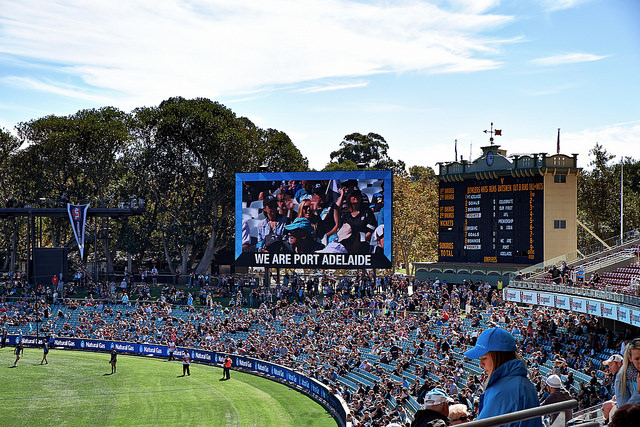
Time to start thinking about the upcoming football season here in Australia. For me that means Australian Rules football, of course.
One of the success stories of the 2014 season was an Adelaide team called “Port Power”. This is one of those rags to riches stories – a team that finished 16th (in a 17 team league) in 2012, improves to 7th in 2013 and then make it to the semi-finals in 2014. The success is put down to a change at the top, good management by new CEO, new coaching staff and cultural change.
You can read about the impact of a top-down driven change program in this article, “How David Koch turned the Power back on.”
While this is a feel good story, and we can take some lessons about changing culture and attitude for our BC and resilience programs, I think the key learnings are around mindset, brand and marketing. Before we can succeed in marketing BC to our Executives and business leaders we need to re-evaluate our brand and how we position it. We need to look at some Marketing 101 concepts.
BC practitioners are often very bad at this aspect of managing a programme. We think people should just do BC because it is the “right thing to do”, or because some standard says you should. In fact we need to persuade and even ‘sell’ people on the need to work with us.
Back in January of 2011 I wrote about the need for sales skills in BC and suggested sending our people to sales training. I think we might have gone too far down that road with our made up ROI and other metrics. At the same time I suggested a marketing approach based on promoting the management aspects – and going forward we need to put more emphasis on marketing and developing our brand.
The Port Adelaide case explores a club with a narrow focus, wanting to broaden from local focus to become a national business. Not dissimilar to the idea promoted in the last BCI Good Practice Guide, where BC is a broader focussed discipline than BCM. The football solution was to change the style of game – make it fun and entertaining.
“The Power essentially faced the same problem all challenger brands do – building relevance in an environment where others had a far stronger footprint”.
The concept of a “challenger brand” is directly relevant to BC. Generally Risk Management is the larger footprint. In some organisations BC is also the a smaller player compared to the IT Disaster Recovery practice.
We need to become a challenger brand – and perhaps more so when it comes to the resilience space. Many of the other disciplines seem to be taking over that market. The Port Power article tells us we can either bemoan the fact that we are a challenger, or knuckle down, get to work and “lift ourselves to a new level”.
In doing that we are going to have to understand our brand – what it represents and how to position it in our market. In fact we may have to better understand just who our market is!
A brand is about behaviours and practices, not labelling.
To change the way you position BC in your organisation (the brand), you first need need to change what you actually do, and the way you go about it.
Changing the name, to resilience or something else, simply undermines the credibility and value of the brand.
Thats why this series is going to introduce and explore marketing, what a brand is, how to position your brand and how the concept of the challenger brand applies.
Being successful as a challenger brand is not a question of size, but of your state of mind. These are often portrayed as the classic David v Goliath battles.
I hope the series will be useful, and that we can have some comment and discussion along the way. Especially if there are any aspects of marketing and its application to BC that are of particular interest.
How do you define your BC brand?
Have you powered up your BC marketing lately?
Leave a Reply